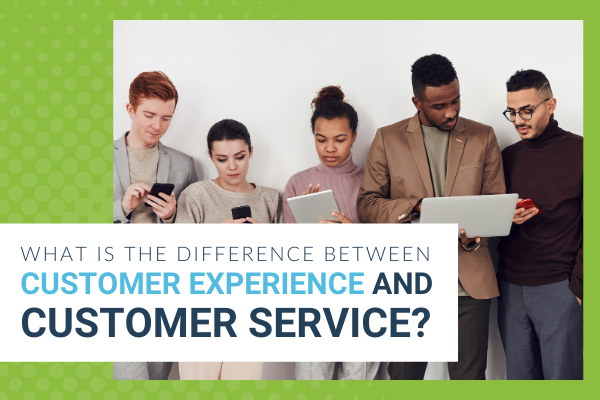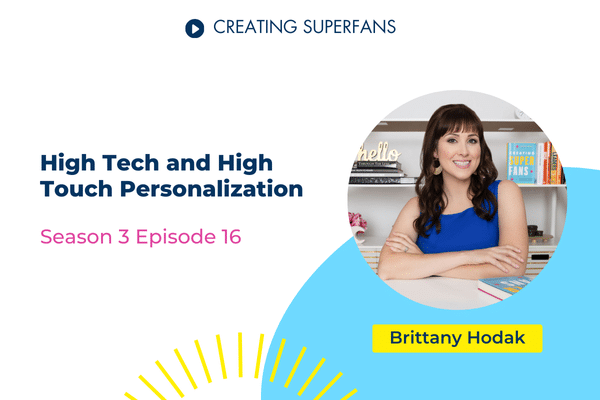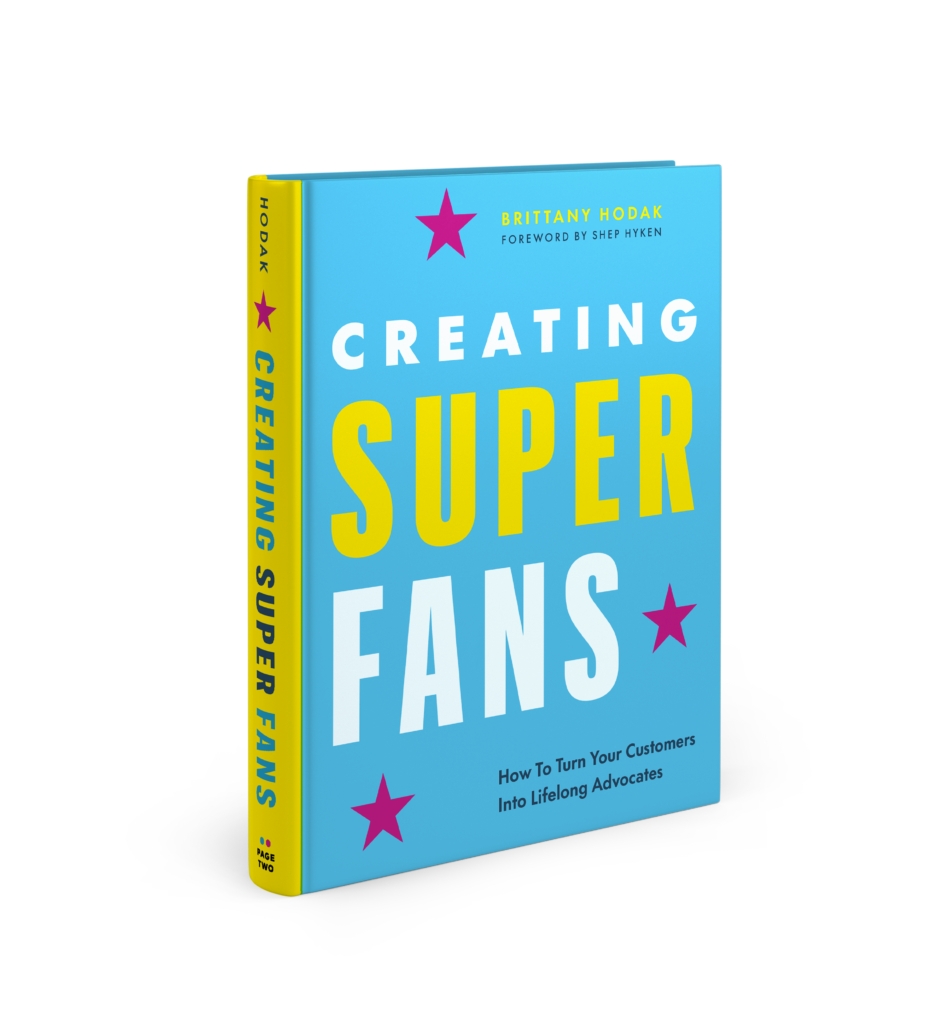Customer experience (CX) and customer service often sound like two words meaning the same thing. What is actually the difference between customer experience and customer service, if anything? Are these just two sides of the same coin, or do the terms refer to two unique aspects of the marketing journey?
At the end of the day, it all comes down to making your customers happy. This means having a customer-first approach to everything you do, from the first interaction to the post-sale follow-up. As a brand, it’s your job to master both customer experience and customer service. Though the names sound suspiciously similar, these are two separate terms with unique, important definitions.
Yes, it’s true, there’s a lot of overlap in the definitions of these terms. However, knowing the difference between customer experience and customer service is essential to creating a strategy that works for your brand, no matter how big or small. Once you recognize what sets them apart—and how you can use these terms to improve your business—you’re ready to serve your customers at a higher level.
What is customer experience?
To start, let’s define customer experience. To put it as simply as possible, customer experience is the overall impression you leave customers at every stage of the customer journey. While you might not think these little experiences are important, this couldn’t be further from the truth. In reality, 32% of customers stop doing business with a brand they love after only one bad experience. That means it doesn’t take much to get on a customer’s bad side.
In other words, customer experience is the journey your customers have with your brand. It’s every interaction, social media post, and checkout page. If this sounds broad and all-encompassing, that’s because it is. However, you don’t need to be an industry expert to see why having warm, inviting, and consistent interactions with customers translate to more sales and referrals.
The customer experience is something that’s earned through trust. When customers build loyalty with a brand, they turn into superfans. These are the types of customers that line up in front of stores before product launches, stay loyal long-term, and share their love for the brand publicly. Ultimately, the customer experience is the relationship you build with your customers over time.
Examples of Exceptional Customer Experience
Next, let’s take a closer look at some brands that understand the importance of their customer experience. The fast-food chain McDonald’s might have 36,000 stores across the country, but that doesn’t mean they always get it right. In fact, for a while, they were getting it very wrong, and their customer feedback was consistently negative.
While the fast-food chain could have easily turned a blind eye and held firm to what they’d been doing for decades, they decided the path forward lied in their customer feedback. By listening closely to what their customers needed from them, they delivered a higher level of customer experience.
Through feedback and research, the fast-food chain learned their customers felt disappointed in the recent menu changes and the types of ingredients. When McDonald’s simplified their menu and offered fresher ingredients, the company achieved a 30% increase in sales. This is a brand that continues to do customer experience right, even if it means changing their whole approach.
Another shining example of a brand that knows how to offer a great customer experience is USAA, a bank for military members and their families. By offering personalized service and treating customers like individuals (not numbers), USAA has a net promoter score four times higher than the average banking score.
How did they earn these loyal customers? It’s simple—they use the latest technology to make it easier for customers to manage their own tools as well as give back to their own customers. Because USAA works with military servicemen and women and their families, they cater their products to the niche needs of this demographic. These smart strategies are why USAA is the top financial brand in terms of loyalty and user satisfaction.
What is customer service?
Next, let’s discuss the difference between customer experience and customer service by examining customer service in more detail. This refers to the assistance and help provided by a company to customers. Unlike customer experience, customer service specifically relates to the communications and methods for handling customer concerns, questions, and problems.
Though many brands focus on customer service training only for the service team, there are truly no restrictions on who can offer exceptional customer service. In fact, all team members, regardless of department, should have the right customer service skills to assist with a variety of customer-focused situations.
Real-life examples of customer service in action include support requests, social media responses, and all types of customer-facing service. Whether you interact with customers 100% online, in-person, or some hybrid of the two, you can’t neglect your service. With a reported 96% of consumers saying customer service is an important factor when choosing to be loyal to a brand, you can’t ignore this concept.
Ultimately, customer service plays a large role in your overall customer experience. The types of communications and advice impact your customers’ feelings about your brand and your reputation long-term. Not only do you need to understand your customers’ pain points, but you need to be ready to meet their concerns with empathy and respect.
Examples of Exceptional Customer Service
You likely can identify examples of exceptional customer service in your own life, but let’s tackle some clear examples to see how service helps businesses shine. Naked Wines is a company that gives everyday wine lovers access to the world’s best winemakers in just a few clicks.
While wine is notoriously intimidating, Naked Wine makes things as easy and clear as possible for their users through high-level service. Not only does Naked Wines offer an automated assistant to help customers with quick questions, but they also make it incredibly simple to speak to a member of their team. Thanks to these efforts, this brand consistently earned the Stevies Gold Prize for Innovation in Customer Service.
Another example of outstanding customer service is Nurx, a company that allows women to access medication online without an in-person doctor visit. With simple guides and quizzes to lead first-time users through the process, everything is explained clearly every step of the way.
Handling your own healthcare is often scary, especially if you’re not sure what’s right for you. As a brand, Nurx prides itself on helping customers through every step with its exceptional service. Users can speak to an agent or health provider in just a few clicks. Plus, help is even available through their mobile app.
Additionally, Nurx knows that its customers make decisions about their health outside of traditional business hours. That’s why the customer care team is available 7 days a week via email, chat, or phone, and all communications are 100% confidential. By being there for their customers in the ways that count, they’ve become one of the biggest leaders in telehealth. In 2020, Nurx reported a 75% increase in new patient medication requests, and this number only continues to grow as they earn brand loyalty through service.
Customer Experience Vs. Customer Service
To summarize, the difference between customer experience and customer service is simply that customer service is only one piece of the bigger puzzle. Your customer experience is the full sum of your customer’s journey with your brand, from the first to last interaction.
While your customer support process will always be important, it doesn’t exist in a vacuum. It’s no longer enough to have strong support. You also need a customer-first approach to the full experience, nurturing relationships at every opportunity.
Unlike customer experience, service is reactive. Customer service is typically initiated by the customer (ie. they have a problem with their order). When the customer has a concern, they reach out to the support team through their preferred method. This is reactive.
On the other hand, customer experience is proactive. When you focus on your customer service, you anticipate the needs of your customer by asking for feedback, studying the customer journey, and improving the overall experience. It’s in this distinction between reactive and proactive that you find the key difference between customer experience and customer service.
Find the Right Balance Been Experience and Service
Lastly, it’s important to recognize that the customer experience isn’t better than customer service. In reality, they’re both essential to running a successful business. Your customers have never been more mindful of both your service and the overall experience. These are merely parts of the same puzzle, both of which are absolutely vital to your ability to create superfans.
Now that you understand the subtle difference between customer experience and customer service, you’re ready to take the next steps in serving your customers. From paying close attention to your support team to monitoring customer feedback, don’t underestimate these small changes in your overall strategy.





